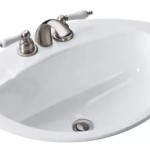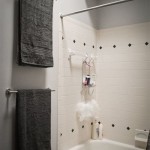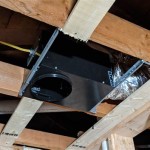ADA Bathroom Bar Height: Understanding Regulations and Design Considerations
The Americans with Disabilities Act (ADA) plays a crucial role in ensuring accessibility for individuals with disabilities in public spaces, including restrooms. Within the context of bathroom design, specific regulations exist concerning the height and placement of grab bars to provide necessary support and safety for users with mobility limitations. Understanding these ADA guidelines is essential for architects, builders, and property owners to create inclusive and compliant environments. This article aims to explore the specifics of ADA bathroom bar height regulations, design considerations for optimal usability, and the importance of adherence for accessibility.
ADA Regulations for Grab Bar Height and Placement
The ADA Standards for Accessible Design clearly define the requirements for grab bars in accessible restrooms. These standards are not merely suggestions, but legally enforceable regulations for specific types of facilities, including public accommodations, commercial buildings, and government facilities. A thorough understanding of these regulations is paramount to ensure compliance and prevent potential legal ramifications.
The key specifications relating to grab bar height are centered around providing a reliable gripping surface for users transferring to and from the toilet, as well as supporting individuals while using the toilet. The ADA mandates that grab bars must be installed within a specific height range to be considered compliant and effective. This height range promotes ease of use for a diverse range of individuals with varying physical abilities.
Specifically, the ADA requires that the top of the gripping surface of the grab bar be installed between 33 inches (840 mm) and 36 inches (915 mm) above the finished floor. This height range applies to both side wall and rear wall grab bars. It is important to note that these measurements are taken from the finished floor, meaning the final floor surface after all flooring materials have been installed. Failure to adhere to these height requirements can render the grab bars ineffective and non-compliant with ADA regulations.
Beyond height, the ADA also stipulates requirements for the length and positioning of grab bars. For side wall grab bars adjacent to toilets, the bar must be at least 42 inches (1065 mm) long and extend at least 12 inches (305 mm) beyond the front edge of the toilet. This extension provides support for users as they transfer from a wheelchair or other mobility device to the toilet. For rear wall grab bars, the bar must be at least 36 inches (915 mm) long and be centered on the toilet. If space constraints preclude the installation of a 36-inch rear grab bar, a 24-inch (610 mm) minimum bar may be acceptable, provided it is located as close as possible to the centerline of the toilet.
In addition to length and height, the ADA also addresses the diameter and clearance of grab bars. The gripping surface of the grab bar should have an outside diameter of 1 1/4 inches (32 mm) to 1 1/2 inches (38 mm), or the shape shall provide an equivalent gripping surface. This diameter range ensures a comfortable and secure grip for individuals with varying hand sizes and dexterity. Furthermore, the space between the grab bar and the wall must be at least 1 1/2 inches (38 mm) to allow for adequate hand clearance. This clearance prevents users from scraping their knuckles against the wall while gripping the bar.
Consistent enforcement of these regulations ensures that public restrooms are accessible and safe for individuals with disabilities. Property owners and contractors should consult the ADA Standards for Accessible Design for detailed information and specific requirements related to grab bar installation. Local building codes may also have additional requirements, so it's crucial to verify compliance with all applicable regulations.
Design Considerations for Optimal Usability of Grab Bars
While adherence to ADA regulations is paramount, designing bathrooms with optimal usability in mind requires considering other factors beyond the minimum requirements. Strategic placement, bar style, and supporting elements can significantly enhance the functionality and accessibility of grab bars for a wider range of users.
The placement of grab bars should be carefully considered within the overall context of the bathroom layout. The goal is to provide support where it is needed most, facilitating safe and comfortable transfers and movements. For example, in addition to the required side and rear wall grab bars, consider installing an additional grab bar on the opposite side of the toilet to provide support for individuals with limited upper body strength or those who prefer to transfer from that direction.
The type and style of grab bar can also impact usability. While straight grab bars are the most common and generally the most economical, other options, such as angled or hinged grab bars, may be more suitable in certain situations. Angled grab bars can provide support at different heights and angles, accommodating varying user needs. Hinged grab bars can be folded up and out of the way when not needed, providing greater flexibility in smaller spaces. The choice of grab bar style should be based on the specific needs of the users and the constraints of the bathroom layout.
The mounting hardware and wall structure are also critical considerations. Grab bars must be securely mounted to the wall structure to withstand significant weight and force. The wall structure must be reinforced to provide adequate support. It is recommended to consult with a structural engineer to ensure that the wall can handle the load. The mounting hardware should be durable and corrosion-resistant to withstand the harsh environment of a restroom. Improper installation can lead to grab bar failure, posing a serious safety hazard.
Moreover, consider the integration of other accessibility features to complement the grab bars. These features include accessible toilet paper dispensers, accessible sinks and faucets, and adequate maneuvering space. An accessible toilet paper dispenser should be located within easy reach of the user while seated on the toilet. Accessible sinks and faucets should be positioned at a height and depth that allows users to comfortably wash their hands. Adequate maneuvering space around the toilet and sink is essential for users with wheelchairs or other mobility devices to navigate the bathroom safely and independently.
Furthermore, consider the aesthetic aspects of grab bar design. While functionality is paramount, grab bars should also be visually appealing and integrate seamlessly with the overall bathroom design. Grab bars are available in a variety of finishes and styles to complement different design aesthetics. Selecting grab bars that match the existing fixtures and finishes can create a more welcoming and aesthetically pleasing environment.
The Importance of Adherence to ADA Standards
Adherence to ADA standards for bathroom bar height and placement is not merely a matter of legal compliance; it is a fundamental aspect of creating inclusive and accessible environments for all individuals. By following these guidelines, property owners and builders demonstrate a commitment to providing equal access and promoting the dignity and independence of people with disabilities.
Compliance with ADA standards helps to prevent accidents and injuries in restrooms. Grab bars provide essential support for individuals with mobility limitations, reducing the risk of falls and other accidents. Proper installation and placement of grab bars can significantly improve the safety and usability of restrooms for this population. Failure to comply with ADA standards can expose property owners to legal liability in the event of an injury.
Moreover, compliance with ADA standards enhances the overall quality of life for individuals with disabilities. Accessible restrooms allow individuals to maintain their independence and participate fully in society. Knowing that accessible facilities are available can empower people with disabilities to engage in activities that they might otherwise avoid. This increased participation can lead to greater social inclusion and a higher quality of life.
Furthermore, adherence to ADA standards benefits a wider range of users beyond those with disabilities. Elderly individuals, people with temporary injuries, and pregnant women can also benefit from the support and stability provided by grab bars. By creating accessible restrooms, property owners can improve the safety and usability of their facilities for a diverse range of users.
Finally, adhering to ADA standards can enhance the reputation and brand image of a business or organization. Demonstrating a commitment to accessibility sends a positive message to customers, employees, and the community. It can attract new customers and enhance customer loyalty. In today's increasingly diverse and inclusive society, accessibility is becoming an increasingly important factor in consumer decision-making.
In conclusion, understanding and adhering to ADA guidelines for bathroom bar height and placement is essential for creating accessible and safe restroom environments. By carefully considering the regulations, design considerations, and the importance of accessibility, property owners and builders can ensure that restrooms are usable and welcoming for all individuals, regardless of their physical abilities. This commitment to accessibility is not only a matter of legal compliance but also a reflection of a commitment to social responsibility and inclusion.

Ada Toilet Grab Bar Placement Guide Commercial Grabbars Com

Ada Toilet Grab Bar Placement Guide Commercial Grabbars Com

Ada Bathroom Requirements Toilet Height Grab Bars Stall Accessories More Laforce Llc

Controls And Accessories For Shower Bathtub Ada Guidelines Harbor City Supply

Ada Bathtub Grab Bar Placement Guide Commercial Grabbars Com

Ada Grab Bar High In Bathtubs

Ada Bathroom Grab Bar Requirements 2024

Grab Bars In All Accessible Bathing Facilities Ada Guidelines Harbor City Supply

Proper Shower Grab Bar Placement Keeps Your Family Safe Improveit

Ada Grab Bar Requirements For Bathrooms
Related Posts







